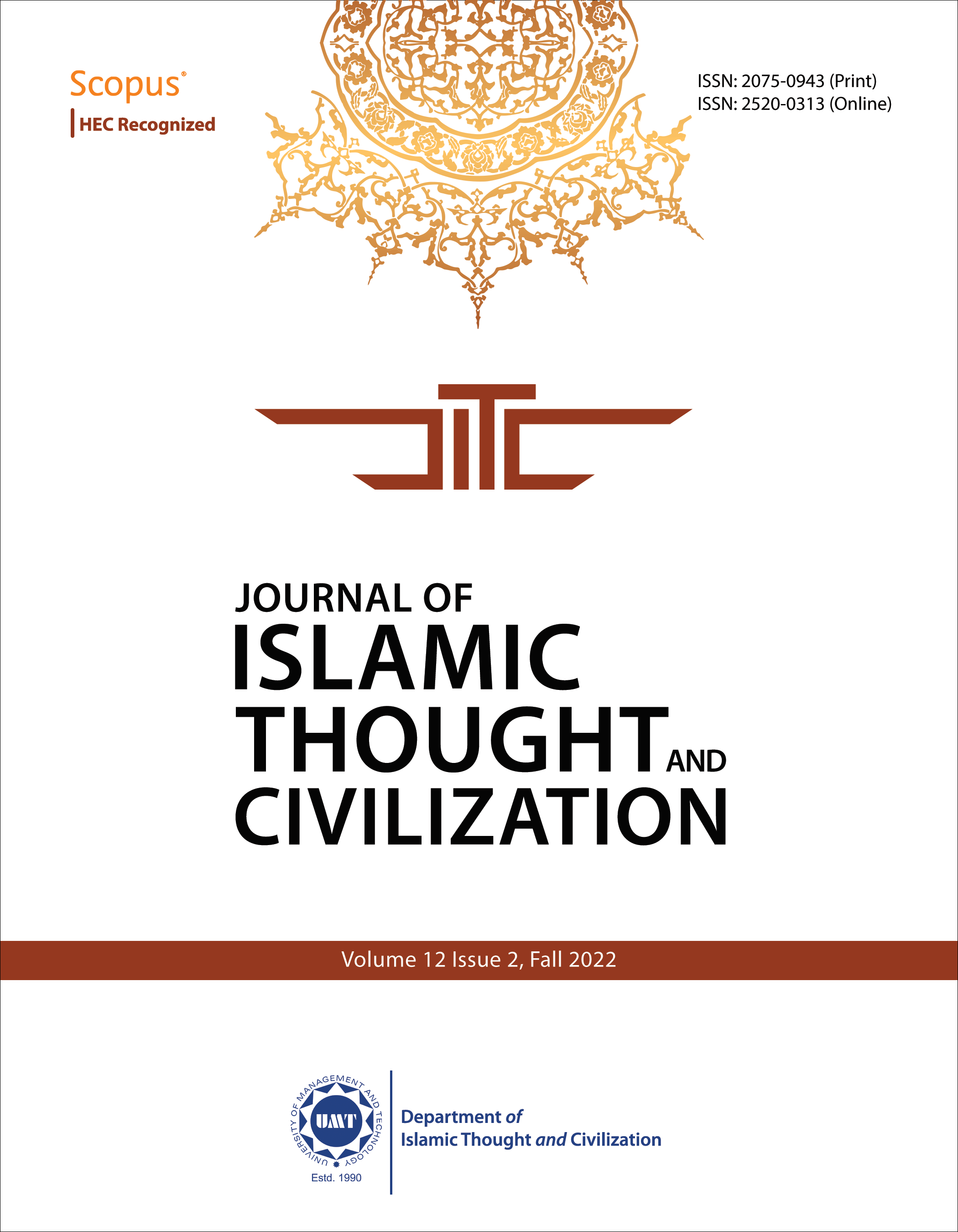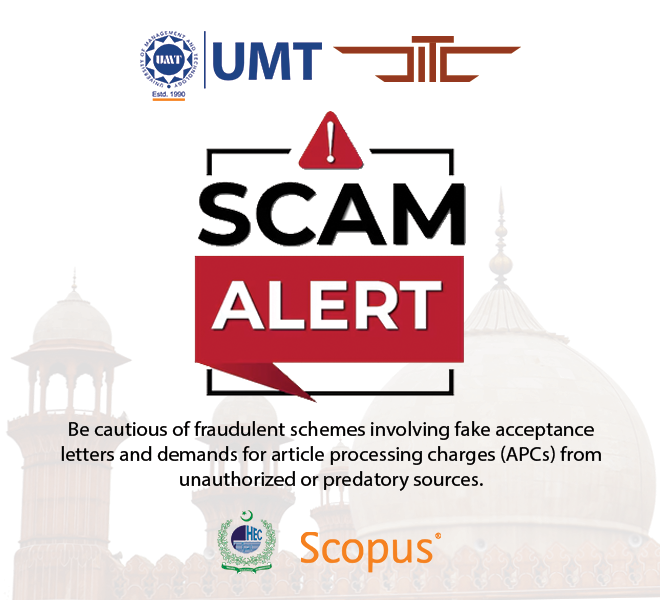Determination of Islamic Month Start by Moonsighting Australia (Case Study: 1 Dzulhijah 1441)
Abstract
 Abstract Views: 365
Abstract Views: 365
The determination of the Islamic calendar is paramount in Islam because it strongly relates to worship, like Ramadan fasting, eid-al-fitr, and zakat fitr. Many studies have examined young moon visibility criteria in many Muslim countries, such as Indonesia, Saudi Arabia, Thailand, and Singapore. However, no study on the initiation of the Islamic month has been conducted in Australia, a Muslim-minority country with middle-eastern immigrants seeking jobs. One of Australia's most trusted organizations to announce the start of Hijri month is Moonsighting Australia. Therefore, this study aimed to analyze the determination of the Islamic calendar by Moonsighting Australia organization based on factors such as method, matla, rukyat time, hilāl visibility, and resistors (1 Dzulhijjah 1441 H). A descriptive study with a qualitative approach used literature reviews, content analysis, and case studies. Primary data were taken from a decision letter from Moonsighting Australia about the start of Dzulhijjah 1441 H, interviews with the coordinator, and relevant references. The findings showed that Moonsighting Australia applies a rukyat method by the naked eye - without any optical aids and hilāl visibility criteria consideration - every 29th of Hijri month. Also, it tunes the concept of matla wilayat al hukmi, where the sighting process and result are implemented throughout Australia’s territory.
Keywords: Australia, Dzulhijjah, Hijri, Islamic Month, Moonsighting.
Downloads
References
Abdullah, Shalih bin Fauzan bin. At Tauhid Li Ash- Shaff Al- Awwal Al- ‘Ali. Edited by Agus Hasan Bashori. Jakarta: Darul Haq, 2013.
Ackerman, Steven, and John Knox. Meteorology. Jones & Bartlett Publishers, 2011.
Ahmad, Nazhatulshima., Mohd Saiful Anwar Mohd Nawawi, Mohd Zambri, and Zuhaili Mohd. “A New Crescent Moon Visibility Criteria Using Circular Regression Model: A Case Study of Teluk Kemang, Malaysia.” Sains Malaysiana 49, no. 4 (2020): 859–70. DOI: https://doi.org/10.17576/jsm-2020-4904-15
Ahmad, Siti Arinah., and Shakir Akram Hassan. “The Role and Effort by Ministry of Religious Affairs of the Republic of Indonesia in Consolidation and Determining the Beginning of the Holy Month of Ramadan and Eid Celebrations in Indonesia.” International Journal of Academic Research and Business and Social Sciences 7, no. 6 (2017): 968-78. DOI: https://doi.org/10.6007/IJARBSS/v7-i6/3057
Ahmed, Ahmed Kamil., and Abdul Halim Abdul Aziz. “Young Moon Visibility Criterion Based on Crescent Illumination and Sky Brightness Contrast Model.” Middle-East Journal of Scientific Research 21, no. 9 (2014): 1616-41.
Al-Aini, Abu Muhammad Mahmud bin Ahmad bin Musa Badruddin. Syarah Sunan Abu Dawud (The Explanation of Sunan Abū Dāwud). Riyadh: Maktabah Rasyd, n.d.
Akhyar, Andi Muh. “Optimasi Kriteria Kalender Islam Terpadu Berdasarkan Posisi Matahari Dan Bulan Menggunakan Algoritma Meeus (Optimization of Integrated Islamic Calendar Criteria Based on the Position of the Sun and Moon Using the Meeus Algorithm).” Universitas Gadjah Mada, 2015.
Amin, Muhammad Faishol. “Ketajaman Mata Dalam Kriteria Visibilitas Hilal (Sharpness of the Eye in the New Crescent Visibility Criteria).” Al-Marshad: Jurnal Astronomi Islam Dan Ilmu-Ilmu Berkaitan 3, no. 2 (2017). https://doi.org/http://dx.doi.org/10.30596%2Fjam.v3i2.1526. DOI: https://doi.org/10.30596/jam.v3i2.1526
Arifin, Jaenal. “Fiqih Hisab Rukyah Di Indonesia: Telaah Sistem Penetapan Awal Bulan Qamariyyah) (Fiqh Hisab Rukyah in Indonesia: Study the System of Determining the Beginning of the Qamariyyah Month).” YUDISIA: Jurnal Pemikiran Hukum Dan Hukum Islam 5, no. 2 (2016).
Australia.com. “Australia’s Seasons,” 2020. https://www.australia.com/en/facts-and-planning/australias-seasons.html.
Al-Bukhārī, Abū ‘Abdillāh Muḥammad bin Ismā’īl. Ṣaḥīḥ Al-Bukhārī. Dimasyq: Dār Ibnu Kaṡīr, 1993.
Al-Bukhārī, Muḥammad ibn Ismā’īl ibn Ibrāhīm. Ṣahīh Al-Bukhārī. Cet. I. al-Qāhirah: Dār ibn al-Jauzī, 2010.
Burgess, Georgie. “‘Like a Living Creature’: Winter Fog Is Quite a Sight, but What Causes It and When Is It Just Mist?” ABC News, 2021. https://www.abc.net.au/news/2020-06-21/what-causes-fog-and-mist/12358992.
Caldwell, John A R, and C David Laney. “First Visibility of the Lunar Crescent.” African Skies 5 (2000): 15.
DeSilver, D. “World’s Muslim Population More Widespread than You Might Think.” Factank, 2013. http://pewrsr.ch/116QRmk.
Doggett, LeRoy E., and Bradley E Schaefer. “Lunar Crescent Visibility.” Icarus 107, no. 2 (1994): 388–403. https://doi.org/https://doi.org/10.1006/icar.1994.1031. DOI: https://doi.org/10.1006/icar.1994.1031
Fotheringham, John Knight. “On the Smallest Visible Phase of the Moon.” Monthly Notices of the Royal Astronomical Society 70 (1910): 527. DOI: https://doi.org/10.1093/mnras/70.7.527
Gall, M., Joyce Gall, Walter Borg. Educational Research: An Introduction. 8th ed. Boston: Pearson, 2007.
Gencer, Bulent. “Sighting of Crescent by Communicated Tradition and Mental Proofs.” Turkey Calendar Time Calculating Directorate, 2016. http://www.islamicalendar.co.uk/pdf/HilalKongreEN.pdf.
Hanapi, Mohd Shukri., and Shahir Akram Hassan. “Basis for Using the Rukyah Method for Determining the Arrival of Ramadan and Syawal in Brunei Darussalam.” Journal of Islamic Studies 3, no. 2 (2015): 13-22. DOI: https://doi.org/10.15640/jisc.v3n2a2
Hassan-Bello, Abdulmajeed Bolade. “Sharia and Moon Sighting and Calculation Examining Moon Sighting Controversy in Nigeria.” Al-Ahkām 30, no. 2 (2020): 215–52. https://doi.org/10.21580/ahkam.2020.30.2.5635. DOI: https://doi.org/10.21580/ahkam.2020.30.2.5635
Hassan, Riaz. Australian Muslims: The Challenge of Islamophobia and Social Distance. International Centre for Muslim and non-Muslim Understanding, University of South Australia, 2018.
Hassan, Shahir Akram., and Mohd Shukri Hanapi. “Standard Operating Procedure (Sop) in Determining the Arrival of Shawwal in Brunei Darussalam.” Social and Humanities Journal 10, no. 10 (2015): 27–35.
Hoffman, Roy E. “Observing the New Moon.” Monthly Notices of the Royal Astronomical Society 340, no. 3 (2003): 1039–51. https://doi.org/https://doi.org/10.1046/j.1365-8711.2003.06382.x. DOI: https://doi.org/10.1046/j.1365-8711.2003.06382.x
Ibn Kathir, al-Hafiz Abi al-Fida’ Isma‘il al-Qursyiy al-Dimasyqiy. Tafsir Al-Qur’ān Al-‘Azim. Beirut, Lubnan: Dar al-Ma‘rifah, 1992.
Ilyas, Mohammad. “Limiting Altitude Separation in the New Moon’s First Visibility Criterion.” Astronomy and Astrophysics 206 (1988): 133–35.
Imron, Ali. “Pemaknaan Hadis-Hadis Hisab-Rukyat Muhammadiyah Dan Kontroversi Yang Melingkupinya (The Meaning of Hisab-Rukyat Muhammadiyah Hadiths and Controversy Surrounding Them).” Jurnal Studi Ilmu-Ilmu Al-Qur’ān Dan Hadīs 15, no. 1 (January 13, 2014): 1–22. https://doi.org/10.14421/qh.2014.1501-01. DOI: https://doi.org/10.14421/qh.2014.15101
Lapan Kupang. “Pengamatan Hilal Awal Dzulhijjah 1441 H/21 Juli 2020 (Early Hilal Observation Dzulhijjah 1441 H/21 July 2020),” 2020. https://www.instagram.com/p/CC5tj8hMa8p/.
Mann, Thomas. The Oxford Guide to Library Research. Oxford University Press, 2015.
Mello, Patrick A. Qualitative Comparative Analysis: An Introduction to Research Design and Application. Georgetown University Press, 2021.
Meteorology, Bureau of. “Australia in Spring 2021,” 2021. http://www.bom.gov.au/climate/current/season/aus/summary.shtml.
Al-Mostafa, Zaki A. “Lunar Calendars: The New Saudi Arabian Criterion.” The Observatory 125 (2005): 25-30.
An-Naisaburi, Abu Husain Muslim bin al-Hajaj bin Muslim al-Qusairi. Al-Jamiu Al-Shahih Al-Muslim. Lebanon: Maktambah Ilmiyah, n.d.
Nawawi, Abd. Salam. Rukyat Hisab Di Kalangan NU-Muhammadiyah (Rukyat Hisab Among NU-Muhammadiyah). Surabaya: Diantama, 2004.
Odeh, Mohammad. “Accurate Times.” International Astronomical Center, n.d. https://www.astronomycenter.net/accut.html?l=en.
Odeh, Mohammad Sh. “New Criterion for Lunar Crescent Visibility.” Experimental Astronomy 18, no. 1–3 (December 29, 2004): 39–64. https://doi.org/10.1007/s10686-005-9002-5. DOI: https://doi.org/10.1007/s10686-005-9002-5
Al-Qazwini, Abu Abdullah Muhammad bin Yazid Ar-Rabi’ bin Majah. Sunan Ibnu Majah. Edited by terj. Iqbal dan Mukhlis. Jakarta: Pustaka Azzam, 2005.
Raisal, Abu Yazid. “Berbagai Konsep Hilal Di Indonesia (Various Hilal Concepts in Indonesia).” Al-Marshad: Jurnal Astronomi Islam Dan Ilmu-Ilmu Berkaitan 4, no. 2 (December 20, 2018): 146–55. https://doi.org/10.30596/jam.v4i2.2478. DOI: https://doi.org/10.30596/jam.v4i2.2478
Review, World Population. “Muslim Population by Country 2021,” 2021. https://worldpopulationreview.com/country-rankings/muslim-population-by-country.
Rohmah, Nihayatur. “Ijtimak Sebagai Prasarat Pergantian Bulan Baru Dalam Kalender Hijriyah: Studi Analisis Ijtimak Awal Bulan Syawwal 1441 H) (Ijtima’ as a Prerequisite for the New Moon in the Hijri Calendar: Ijtima’ Analysis Study at the Beginning of Shawwal 1441 H) ).” AL-MIKRAJ: Jurnal Studi Islam Dan Humaniora (E-ISSN: 2745-4584) 1, no. 1 (2020): 78-87. DOI: https://doi.org/10.37680/almikraj.v1i1.509
Sabda, A. Ilmu Falak, Rumusan Syar’i Dan Astronomi (Astronomy, Shar’i Formulation). 2nd ed. Bandung: Persis Pers, 2019.
Saksono, Tono. “Astronomical Calculation as a Foundation to Unify International Muslim Calendar: A Science Perspective.” In Makalah Pada International Symposium: Towards the Unified International Muslim Calendar, Hotel Sahid Jakarta, (2007): 1-15.
Schaefer, Bradley E. “Lunar Crescent Visibility.” Quarterly Journal of the Royal Astronomical Society 37 (1996): 759.
—. “Visibility of the Lunar Crescent.” Quarterly Journal of the Royal Astronomical Society 29 (1988): 511–23.
Schreier, Margrit. Qualitative Content Analysis in Practice. Sage publications, 2012.
Schroeder, Daniel J. Astronomical Optics. London: Elsevier, 1999.
Al-Syafi‘iy, Muhammad bin Idris. Al-Umm. Vol 3. Kaherah, Mesir: Dar al-Wafa’, 2001.
Al-Syaibany, Ahmad bin Muhammad ibn Hanbal. Al-Musnad Ibnu Al-Hambali. Lebanon: Dar al-Hadis, n.d.
Shabbir. “Hilal Monitoring in Australia,” 2021.
Sulaiman, Nur Aida Athirah, and Shahir Akram Hassan. “The Application of Rukyah and Hisāb in Determining the Starting Dates of the Months of Ramadhan and Syawal in Thailand.” International Journal of Academic Research in Business and Social Sciences 8, no. 4 (2018): 788–802. DOI: https://doi.org/10.6007/IJARBSS/v8-i4/4060
Sultan, A. H. “The Length of the New Crescent Moon.” The Observatory 125 (2005): 227-31.
Al-Tirmidżī, Muḥammad ibn ‘Īsā. Sunan Al-Tirmiżī, Cet. II. Mesir: Syarikah Maktabah wa Maṭba’ah Musṭafā al-Bābī al-Ḥalabī, 1973.
Wahidi, Ahmad, Noer Yasin, Abdul Kadir, Abd Rouf, and Saiful Haq. “Implementation of the Mabims Criteria in Determining the Beginning of Islamic Month in Indonesia and Brunei Darussalam.” In Proceedings of the International Conference on Engineering, Technology and Social Science (ICONETOS 2020), (2021): 96–108, https://doi.org/10.2991/assehr.k.210421.016. DOI: https://doi.org/10.2991/assehr.k.210421.016
Yallop, B D. “A Method for Predicting the First Sighting of the New Crescent Moon.” RGO NAO Technical Note, no. 69 (1997).
Yin, Robert K. Applications of Case Study Research. Sage, 2011.
Al-Zuhayliy, Wahbah. Al-Fiqh Al-Syafi‘iy Al-Muyassar. Vol I. Jakarta: Penerbit Almahira, n.d.
Copyright (c) 2022 Fatmawati, Andi Muhammad Akmal, Andi Muh. Akhyar, Azwar, Achmad Nasyori

This work is licensed under a Creative Commons Attribution 4.0 International License.

This work is licensed under a Creative Commons Attribution 4.0 International License. Authors retain copyright and grant the journal right of first publication with the work simultaneously licensed under a Creative Commons Attribution (CC-BY) 4.0 License that allows others to share the work with an acknowledgement of the work’s authorship and initial publication in this journal.








